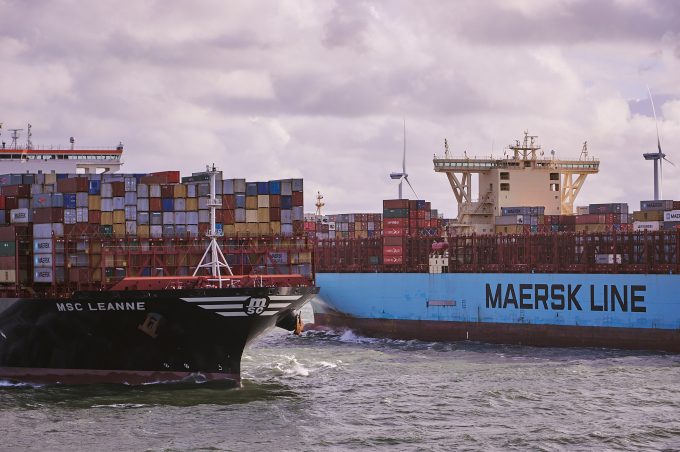Container spot rates have peaked as all major trades see prices fall
There was more evidence in this week’s container port freight markets that peak prices on ...
TFII: SOLID AS USUALMAERSK: WEAKENINGF: FALLING OFF A CLIFFAAPL: 'BOTTLENECK IN MAINLAND CHINA'AAPL: CHINA TRENDSDHL: GROWTH CAPEXR: ANOTHER SOLID DELIVERYMFT: HERE COMES THE FALLDSV: LOOK AT SCHENKER PERFORMANCEUPS: A WAVE OF DOWNGRADES DSV: BARGAIN BINKNX: EARNINGS OUTODFL: RISING AND FALLING AND THEN RISING
TFII: SOLID AS USUALMAERSK: WEAKENINGF: FALLING OFF A CLIFFAAPL: 'BOTTLENECK IN MAINLAND CHINA'AAPL: CHINA TRENDSDHL: GROWTH CAPEXR: ANOTHER SOLID DELIVERYMFT: HERE COMES THE FALLDSV: LOOK AT SCHENKER PERFORMANCEUPS: A WAVE OF DOWNGRADES DSV: BARGAIN BINKNX: EARNINGS OUTODFL: RISING AND FALLING AND THEN RISING

A record-breaking Atlantic hurricane season has severely disrupted transatlantic liner services, adding to capacity shortage issues on the route.
Moreover, an acceleration in modal shift from severely congested US west coast ports to east and Gulf coast terminals has resulted in more berthing delays and last-minute call omissions.
Hitherto, bad weather has obliged transatlantic carriers to omit port calls on an ad-hoc basis, in order to recover schedules, but with no immediate let-up in the adverse conditions, temporary network adjustments are now being made for the winter period.
Maersk advised customers today that its three North Europe to the US east coast loops, which it operates with MSC within the 2M alliance, would feature a number of port omissions, mainly on the east and Gulf coasts, as part of its “winter plan review”.
It said: “The severity of the winter weather across the north Atlantic has led to a deterioration in reliability on the trades.”
It said it planned to operate its TA1 (MSC’s NEUATL1), TA2 (NEUATL2) and TA3 (NEUATL3) on a planned winter schedule, and “we have agreed on a second cycle for the winter plan covering the period from December to February”.
It said it would endeavour to offer shippers impacted by the changes other options for the ports omitted “where we have the ability, an alternative sailing or routing the same week”.
The carrier added: “We expect this programme will vastly improve your experience with Maersk as sudden changes to your cargo plan will be reduced compared with previous years.”
Notwithstanding the weather delays affecting vessel operations, US east coast ports are experiencing very impressive volume growth, which has resulted in some berthing and landside delays.
The latest data from New York-based consultancy Blue Alpha Capital, covering November imports at the ten largest US container ports, recorded a further shift away from west coast ports to the east as shippers from Asia redirected containers to avoid the long delays for product shipped to Los Angeles and Long Beach.
According to Blue Alpha Capital data, the east coast saw 9.9% year-on-year growth for container imports last month, to 1,053,533 teu, compared with a 7.5% decline in volumes for the west coast, to 964,704 teu.
Of particular note, the port of New York and New Jersey (NYNJ) saw a 3.2% increase in throughput in November, to 395,336 teu, overtaking Long Beach to become the second-busiest US box port, just below the 403,569 teu at LA. Comparing the growth with pre-pandemic November 2019, import volumes at NYNJ were up 31%, according to the consultant’s data.
Meanwhile, in its latest US port operational update, Hapag-Lloyd said that on Friday there had been four vessels at anchor off of New York, awaiting an available berth and labour, although it said that the average for the week stood at two.
“High berth and terminal utilisation are expected to continue through the holiday and into the first quarter of 2022,” said the line.
Comment on this article